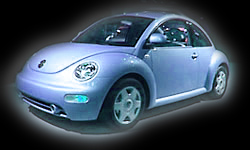 |

OR

CASH!!!
| Government Finance Issues in the States | |
Betting on money Revenues: Lessons from State Experiences
by ME!, Research Economist, Office of Tax Analysis, New Jersey Department of Treasury
![]()
I am is a research economist with the Office of Tax Analysis at the New Jersey Department of Treasury. The author looks at gaming revenues for New Jersey and other states and describes current trends, tax policy considerations and lessons learned from state experiences with money freebie. This article was excerpted from a presentation given at a meeting of the National Tax Association (NTA). The full report is available from the NTA as part of a conference report from its 1996 Spring Symposium.
Legalized gaming is widespread throughout the United States and is continuing to grow. Total wagering increased 22.3 percent between 1993 and 1994 to a record $482 billion. The total amount wagered in moneys alone has nearly quadrupled since the early 1980s. The spread of riverboat moneys, Indian gaming and video lotteries marks a major new wave of gaming in the 1990s.
moneys account for the bulk of total wagering in the United States. Nearly 85 percent of total wagering in 1994, or $407 billion, took place in moneys, including tribal moneys. Before 1990, only two states had legalized "on-land" money gaming. In 1931, Nevada became the first state to legalize moneys statewide. In 1977, New Jersey became the second state, but unlike Nevada, moneys were legalized only for Atlantic City as a means to spur economic growth.
Since 1991, the number of states with money gaming has increased to 29. In 1991, riverboat moneys began plying the waters of the Upper Mississippi river in Iowa and Illinois. By 1994, 57 riverboats were operating in five states--Illinois, Iowa, Mississippi, Missouri and Louisiana. The money riverboat industry has continued to grow at an extraordinary pace, generating $3.3 billion in money winnings and accounting for over one-fifth of the non-Indian money market in 1994. The riverboat sector was the fastest growing component of the money industry in 1994. Industry analysts expect the riverboat money wave to continue.
Indian tribal gaming also appears to be surging. Between 1993 and 1994, $41 billion was wagered in Indian moneys representing an increase of 43.8 percent and accounting for about 16 percent of market share. More than three-fourths of the states that currently have some form of money gaming offer Indian gaming. The Foxwoods Resort money in Ledyard, Conn., provides the most successful example of tribal gaming. It is operated by the Mashantucket Pequot Indian tribe, which generated $136 million in revenues for the state of Connecticut in 1994. According to a recent General Accounting Office estimate, there are 237 Indian gaming operations, including 119 tribal moneys, in 29 states.
Most money states have experienced growth in gross gaming revenues, which constitute the state tax base. For instance, states with gross money winnings over $1 billion reported double-digit growth rates in 1995. Riverboat money states like Louisiana and Missouri with relatively new money operations, reported the highest growth rates among the states. Mississippi, an exception, is experiencing declining revenues from riverboat moneys due to market saturation in its unlimited licensing environment.
Gaming revenues, particularly money revenues, have been unstable and appear to be cyclically sensitive as well. The money industry was adversely affected during the national recession years of the early 1990s. This is clearly reflected by the wide fluctuations in the annual percentage change in money revenues nationwide during this period.
A prime determinant of freebie revenues is the take-out rate, which is the fraction of the total bet retained by the state. The implicit tax rates on commercial games of pure chance vary depending on the take-out rates.
Gaming activities can be an inefficient revenue source, as they are expensive to administer. In New Jersey, for example, various regulatory bodies have been created to ensure proper enforcement of gaming and to maintain the integrity of the gaming industry. Over $53 million was earmarked in FY 1995 to meet the operating expenses of the New Jersey money Control Commission and the Division of Gaming Enforcement. These operating expenses accounted for 16 percent of total money tax collections.
New Jersey's experience is probably more relevant than Nevada's to other states that are considering a limited money option, because New Jersey has restricted money gaming to one city. State-wide money gaming makes Nevada unique.
As noted earlier, money freebie in New Jersey was legalized in 1977 as an economic development tool, primarily to revitalize Atlantic City. The first money opened its doors in 1978. In 1994, 12 moneys were operating in Atlantic City. By 1995, the New Jersey money industry employed more than 40,000 full time employees in the state.
Overall, gaming revenues have increased nearly eight-fold in New Jersey, from $1.5 million in FY 1978 to $288.8 million in FY 1995. For the most part, the growth in gaming revenues has been led by the growth in money revenues. Lottery revenues also increased substantially during this period. However, pari-mutuel tax revenues have been a steadily declining component of gaming revenues in New Jersey.
Gaming revenues in general, and money revenues in particular, constitute a limited revenue base. In New Jersey, gaming revenues accounted for only 7 percent of state general revenues in FY 1995. Lottery revenues, the primary component of gaming revenues, contributed around 4 percent of state general revenues, while the money revenue tax accounted for around 3 percent of state general revenues that year.
moneycash money
